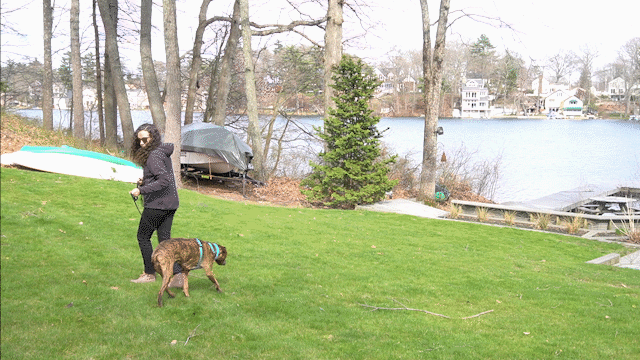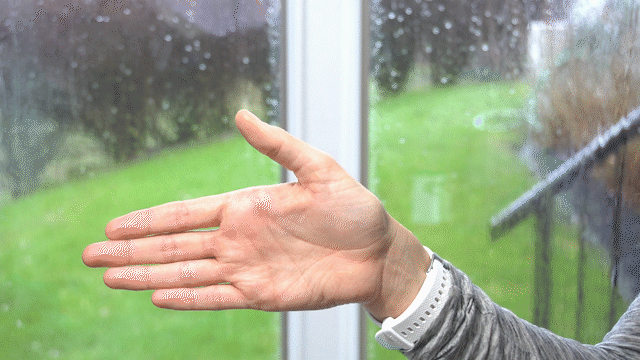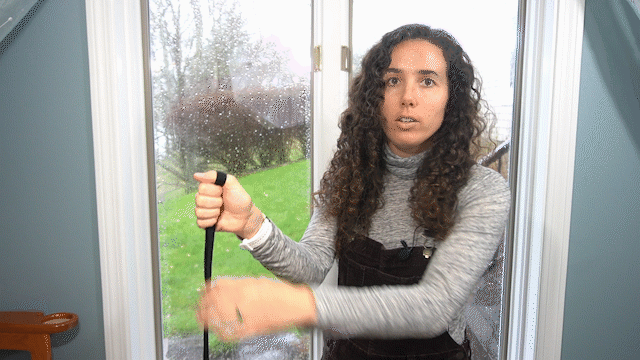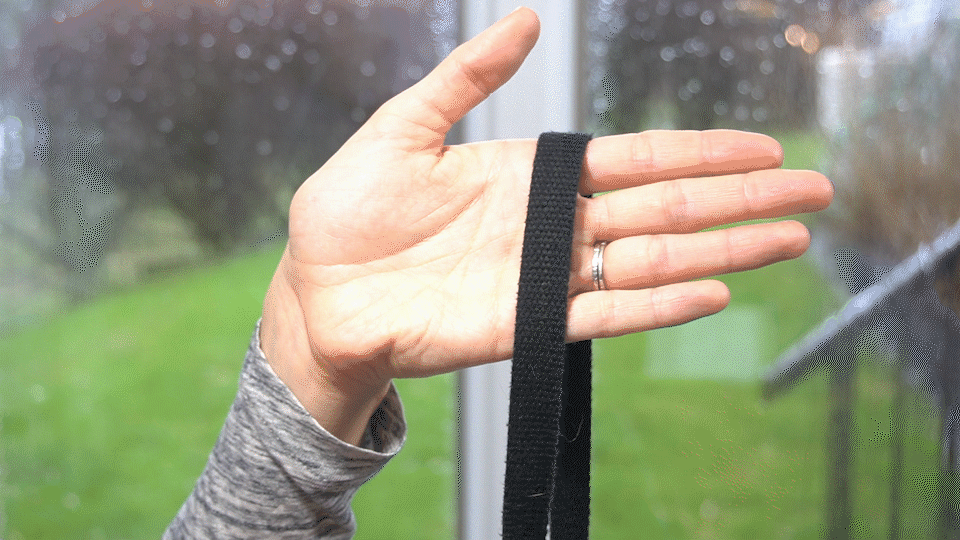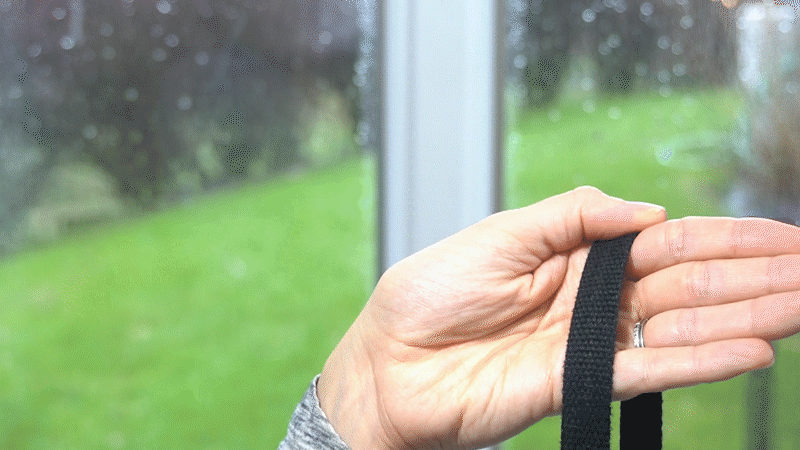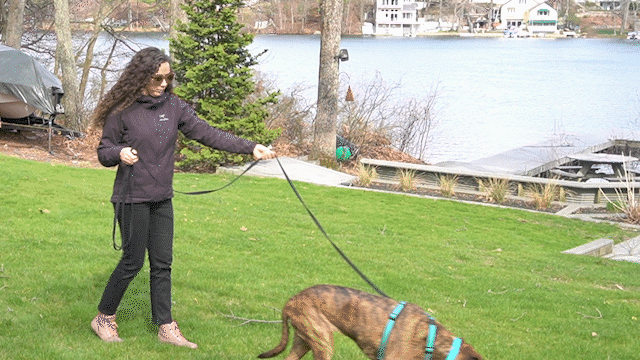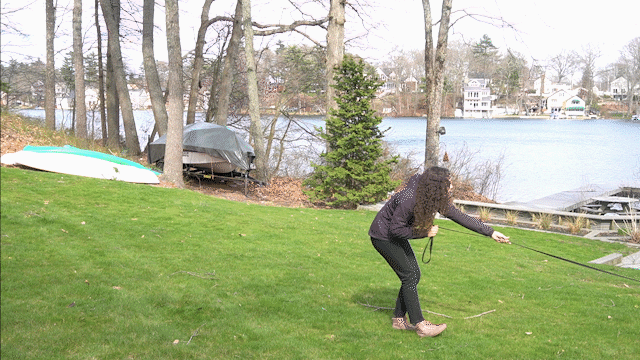How to Use a Long Leash
Tips and techniques for using long leashes for walks, hikes, and training sessions.
Kona and I use a long line to explore my parents’ backyard.
Long leashes are awesome tools to help with training dogs to be responsive off leash and to give them more space for exploration and enrichment on walks. I love them!
But I do think that using them in a way that is safe and not super frustrating is more challenging than you might think. Using one for walks, hikes, or training sessions without any prep work can lead to frustration and injuries for you or your dog. I had my fair share of irritating and dicey incidents before I learned how to wrangle a long leash. This post covers the nitty gritty details of selecting and using long leashes so you don’t have to make the mistakes I did!
Select the Right Long Leash
Using a long leash safely starts with selecting the right leash. I prefer a 15-foot leash made from ¾-inch-wide cotton webbing for most situations. Here’s why:
Leash Length, Bigger Isn’t Always Better.
In order to keep you or your dog from getting tangled and to maintain some amount of control over your dog’s direction and speed, you need to be able to manage the slack of the leash in your hands. The longer the leash, the harder that is to do successfully.
I think that a 15-foot long line strikes an ideal balance between being manageable for me but giving a good amount of freedom for the dog I’m working with.
I would recommend getting a 15-20 foot leash if:
A 15-foot leash could let your dog sniff three times as much on walks.
You want to get one leash for a variety of situations.
You plan to train your dog and/or manage a second dog while using the leash.
You take busier routes or wooded trails.
You’ll be out for more than an hour or so at a time.
I like longer, 30-foot leashes for certain uses as well. I’d recommend getting a 25-30 foot long leash if:
You go to wide open spaces with few people.
You are letting your dog roam to have fun and won’t be training.
You have someone else with you to help you.
There are use cases for leashes longer than 30 feet, but I don’t recommend them for walking or hiking, which is what we are discussing in this article.
A recent study showed that dogs on a 5 meter (16 foot) leash spent 103 seconds sniffing during a 5-minute walk compared to just 37 seconds spent sniffing during a 5-minute walk on a 1.5 meter (5 foot leash). That’s almost three times as long! But, when they were off leash, they averaged 119 seconds of sniffing in a 5-minute walk. That’s only 15% more than they sniffed on the long leashes. So, if trying to manage an extra 5-10 feet is hard for you, the trade off might not be worth the benefit for your dog.
Leash Material, Nice Materials are Worth the Cost.
I’ve got sturdy high tops and pants on to protect my ankles from sprains or burns.
I recommend using flat, cotton webbing or BioThane only. Nylon is more likely to burn or cut your hand, which I can attest to from personal experience years ago. Rope, cord, or other rounded material cuts into hands and other skin much more easily, which is why I recommend flat webbing. While I haven’t tried BioThane myself, I have heard that it’s easy on the hands, doesn’t snag on branches as frequently, and is easier to keep clean. It sounds great!
Prepare to Use a Long Line
Decide if You Need Protective Clothing.
Since I like to use relatively short cotton leashes, I don’t worry about rope burns, getting the leash wrapped around my limbs, or maintaining my grip. I don’t feel the need to wear gloves or other protective clothing.
But, if you are dealing with a nylon line, a rope, a longer leash, a high energy dog, or a dragging leash, I recommend gloves, sturdy pants and long sleeves, and boots.
Kona’s harness helps keep her safe.
Protect Your Dog with a Back-Clip Harness.
A traditional, back-clip harness will take the pressure off their neck, so they don’t accidentally get choked or whipped around by the neck.
It will also keep the leash a little more elevated and make it easier to keep it from tangling in their legs.
Long-Leash Handling Technique
Start with a firm grip on the leash handle.
I hook the handle around my thumb and then close my fist around the leash.
Extend your hand like you are about to shake someone else’s hand. Loop the leash handle around your thumb and let the rest of it drop down in front of your palm.
Close a fist around the leash handle with your thumb resting on top of your fist and the leash extending out the bottom. Now, unless your dog shatters the bones in your thumb, which is not gonna happen, they won’t escape your grip! I know it might feel insecure at first, but trust me, it’s a very sturdy grip. I’ve safely managed plenty of dogs who weighed close to as much as I do by holding the leash in this manner.
I hold all of the loops in my fist to keep them from wrapping around my hand.
Looping or wrapping leashes around your wrist or palm can feel like you have a good grip, but it leaves you at risk of having bones broken, joints dislocated, nerves damaged, and more. The extra length increases the risk that your dog yanks you really hard on the leash, so you need to be extra careful.
Then gather the slack in big loops.
I drape the leash over my second hand from pinky to pointer finger.
Maintaining your firm grip around the handle with one hand, spread your arms out wide to get a 3-6 foot section of the leash between your hands.
Bring your arms back together, making a loop with the leash you just gathered up and gently placing it in the same palm that already has the handle of the leash. You don’t want the loop to wrap around your hand, so it should you want to make sure both sides of the loop are within your fist.
Repeat until you have reeled in almost all of the slack from your dog, leaving them an extra foot or two for flexibility.
Use your second hand to manage your dog’s speed and the slack.
Pressing down with my thumb slows down my dog.
You always want to have both hands on the leash. This, second hand is the one that keeps your dog from running too quickly and hurting you both.
Place your second hand on the leash a few feet away from your first one. Let the leash cross your palm from the pinky side to the thumb side, draping over your pointer finger before continuing to your dog. Try to always maintain this hand position on the leash, even as you release and re-gather the slack. T
If you want to slow your dog down, gently press down on the leash with your thumb to cause a bit of friction.
Put It all Together.
You want your dog to have enough slack to feel like they have freedom to explore but not so much that either of you trips on it or that they can get up to sprint and jerk on the end of the leash, which can be quite dangerous.
To let slack out as your dog moves away, release one loop of slack from your first hand and use your second hand to gently guide it out to your dog without tripping either of you. If they start to move too quickly, you can use the thumb technique from above to slow them down a bit.
As your dog moves closer to you, reel in the additional slack in 3-6 foot sections, just like you did when you got started. Aim for them to have 1-2 feet of slack at all times.
I keep both hands on the leash and let the slack out one loop at a time.
I keep both hands on the leash as I gather up the slack in 3-foot loops.
Letting Your Dog Drag a Long Leash
Having your dog drag a long leash can be riskier than managing the slack, so if you plan to do this, I really recommend sticking with a 20-foot leash or shorter and following these precautions:
Try to go to big, open spaces so your dog doesn’t get tangled on rocks, bushes, and trees. They could really hurt themselves if their leash snags on something while they are running at full speed.
Wear sturdy pants, tall socks, and boots to protect your ankles from burns, sprains, and more.
Stay alert and know where the leash is at all times to stay out of its way.
Gather your dog and the leash in the leash anytime you approach new people to protect them from injuries.
Take frequent breaks to untangle it from your dog, any dogs they are playing with, and anything in the environment.
Practice Makes Perfect
I recommend practicing your long leash handling skills without your dog attached to it first and then around your own yard with your dog before taking them out into the wild. It won’t take you too long to get the hang of it, but like any new skill, you’ll need a little bit of practice to get it down. Good luck!
Resources
Grisha Stewart’s handout, “Leash Skills for BAT” is another great resource for long-leash handling tips.
I have the 15-foot version of this leash. I think it’s 5/8” width is a nice balance between sturdiness and bulkiness.
Trust Your Dog makes custom BioThane long lines that have excellent reviews.

